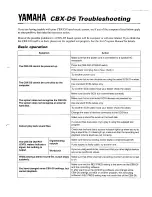
9
4.2 Heat recovery unit
• External coated-plate casing (H)
• Interior of high-quality (expanded) polypropylene (E)PP (not visible, internal).
• 4 connections for ducting (I).
• 2 G4 filters for air purification (J).
• 2 energy-efficient DC motors with high-yield fan (not visible, internal).
• Counter-flow exchanger (heat exchanger) with a thermal yield of more than 95% (not visible, internal).
• Operating panel with read-out for display of data and for setting procedures (K).
• Identification plate (L).
• Condensation drain (M).
• Air connection label (N).
• The Standard Xcell 350V EC BP is for right-oriented air connections to the dwelling. Left handed
versions are also available.
4.3 Heat recovery
• Polluted air is extracted from the kitchen, toilet and shower (A).
• The heat exchanger (B) extracts heat from the exhaust air.
• Fresh outside air is sucked in (C).
• The heat exchanger (B) heats the incoming air without allowing the two airflows to come into contact
with each other.
• The fresh, warm air is supplied to the living room and bedrooms (D).
• The HR (High Yield) counter-flow heat exchanger (B) has such a high thermal yield that extra heating
of the supply air is no longer necessary.
A = Stale air
B = Counter-flow heat exchanger
C = Outside air
D = Supply air
E = Bypass
F = Exhaust air
The balanced ventilation system contributes to energy savings, a healthy interior climate, optimum
living environment, and prevents damp problems.
4.4 Bypass
The Xcell 350V EC BP is fitted with an automatic 100% bypass.
If the ‘bypass’ (E) is activated, then all exhaust air is conducted around the exchanger. The heat
recovery function is then switched off. Cool, fresh air is then supplied to the dwelling, while the warm
(stale) inside air is extracted. This allows for the use of night air to cool the house in the summer. This
so-called ‘free cooling’ is switched on automatically according to the selected comfort temperature on
the display. The Xcell 350V EC BP will work to the temperature set.
The bypass function can only be used in the warmer seasons; the so-called summer operation. This
largely prevents the bypass from staying open during the winter months when the heating is on.










































